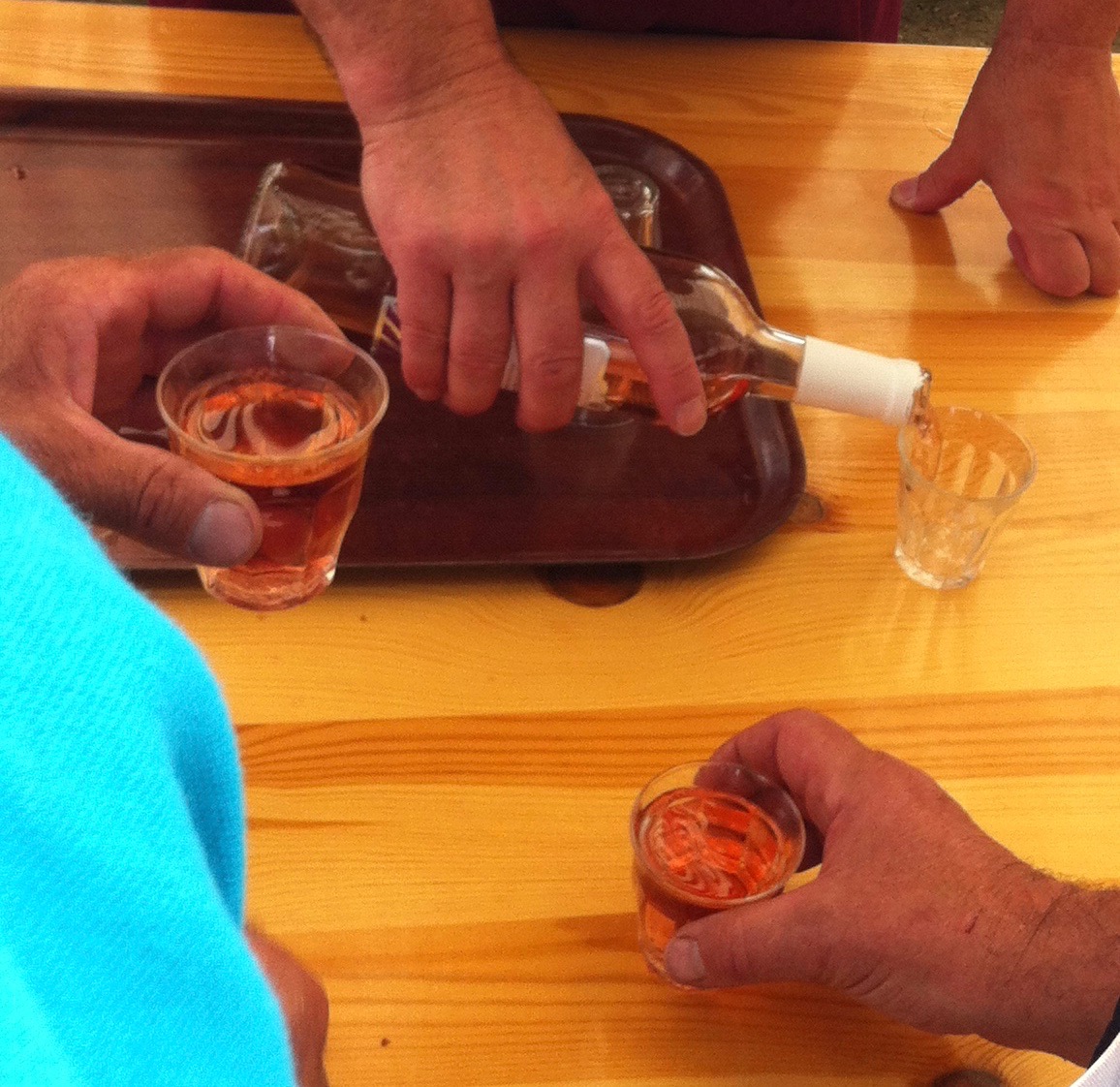
Big, Beefy Farmer Dudes Drink Pink Wine.
I snapped this photo in Burgundy, France in a rural hamlet holding their annual summertime ‘vide-grenier’ which literally means ‘free the attic.’ It translates to what we call a yard sale. In France the whole village has a yard sale – it’s a collective activity. My travel partners and I went to many over the course of several weeks. The scene overflows with rows of the usual yard sale curios alongside unpretentious wine and food tents. The farmers’ wives sliced up cured meats for simple sandwiches while the men poured delicious one-euro-per-glass rosé from a local winery into petite tumblers.
Still, there are many who haven’t come to grips with pink wine. Rosé has been around way longer than the oft laughed at Beringer or Sutter Home, White Zinfandel. Let’s start with the fact that a White Zinfandel grape does not exist. Pink wines are made from red wine grapes. Almost all red varieties have clear pulp. The only reason a red wine is red is because the juice is fermented and macerated with the skins. All of the red wine color (and most of the flavor and tannins) comes from the skins. In order to make a pink-hued wine, a winemaker will leave the skins on the juice for a limited amount of hours. Two-to-three hours for a light pink/salmon and perhaps several more hours for a deeper fuchsia.
The world’s rosés are typically produced in a dry or slightly off-dry style. They’re crisp and refreshing and easily pair with just about anything. The Co-op in Arcata, Calif. has a handful from France in the $10-$12 range. BevMo! too has several good-value French labels. For just a few bucks more, pick up a bottle of the new release 2015 Trinity River Vineyards rosé of Sangiovese. Stunning. Buy at Wildberries where the new wine department sommelier, Charity Anais, sells it super chilled and picnic ready.
I offer up one cautionary pointer – look at the vintage. Don’t buy old pink wine! Ninety-nine percent of all tank-fermented and finished rosés and whites need to be consumed within months of purchase. If you want fresh, fruit-forward juicy acidity you need to make sure the label says 2015.



Leave a Reply